Produce big energy savings
Did you know that the average small manufacturing facility in the Midwest spends nearly $9,500 per year on electricity and natural gas? And, energy consumption can vary widely across facilities. Process heating, as well as running motors and air compressors are a few of the biggest energy culprits. Bundling upgrades and saving on improvements is easier than ever with the Small Business Express program, which connects you with qualified contractors and rebates to create lasting energy efficiency savings for your facility.
What uses the most energy in small manufacturing facilities
The following pie charts illustrate what manufacturing activities use the most energy and cost the most. Process heating, machine drive (e.g., motors and air compressors), facility lighting, and space heating and cooling account for a large portion.
Fabricated Metal Electricity End Uses
End uses include (counterclockwise, from the top): 1% onsite transportation, 2% other facility support, 11% lighting, 14% HVAC, 6% other process use, 41% machine drive, 4% process cooling and refrigeration, 16% process heating, 1% conventional boiler use and 4% miscellaneous.
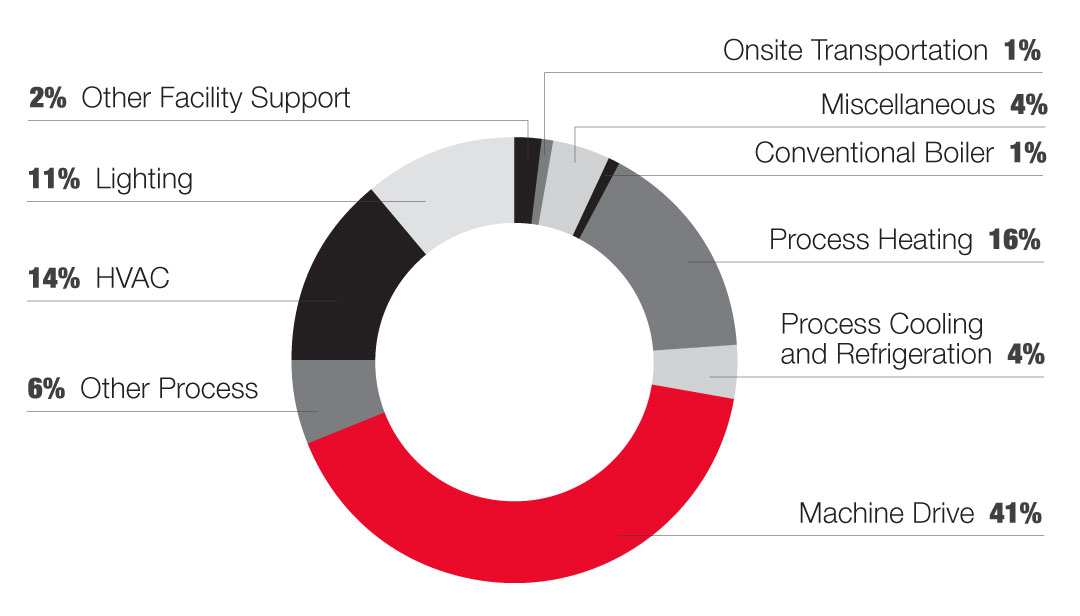
Fabricated Metal Natural Gas End Uses
End uses include (counterclockwise, from the top): 2% other facility support, 24% HVAC, 3% other process use, 56% process heating, 2% conventional boiler use and 13% miscellaneous.
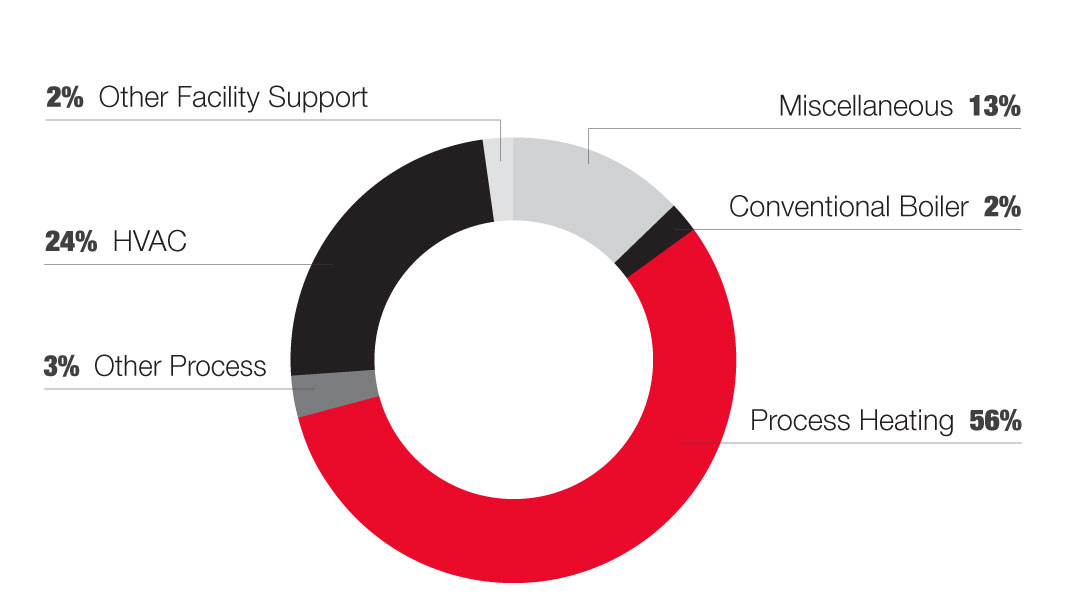
Machinery Manufacturing Electricity End Uses
End uses include (counterclockwise, from the top): 12% lighting, 17% HVAC, 3% other process use, 51% machine drive, 4% process cooling and refrigeration, 4% process heating, 1% conventional boiler use, 4% miscellaneous, 1% onsite transportation and 4% other facility support.
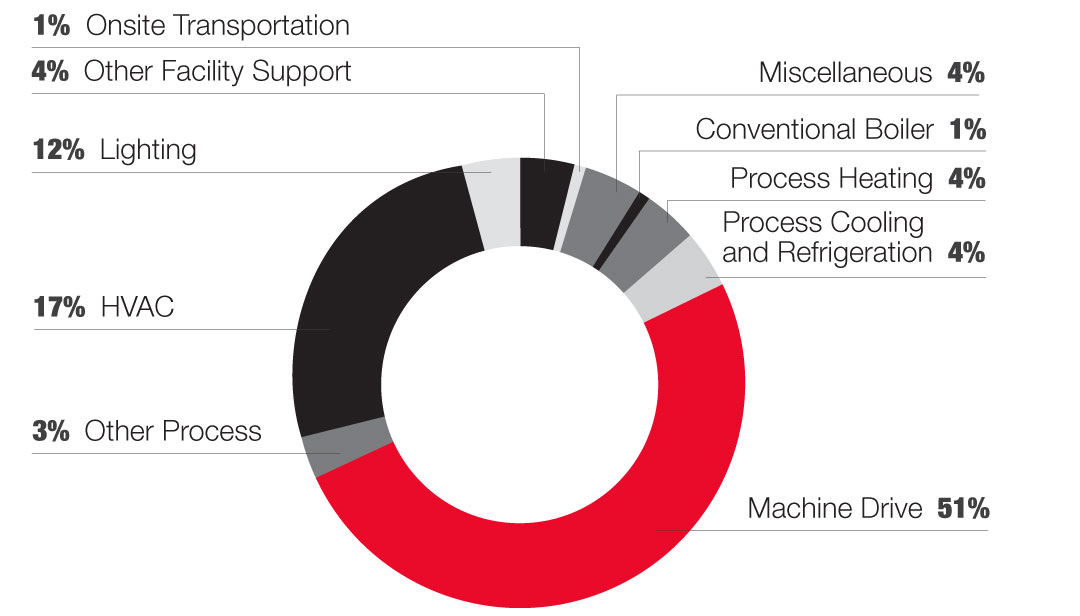
Machinery Manufacturing Natural Gas End Uses
End uses include (counterclockwise, from the top): 2% other facility support, 42% HVAC, 9% other process use, 33% process heating, 4% conventional boiler use and 11% miscellaneous.
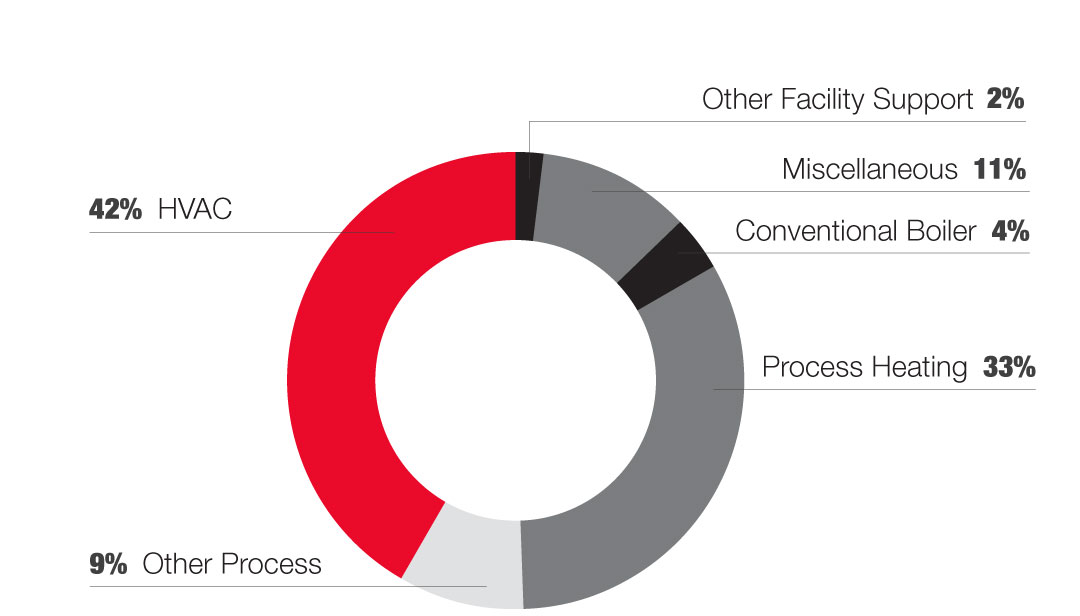
Miscellaneous Manufacturing Electricity End Uses
End uses include (counterclockwise, from the top): 4% other facility support, 13% lighting, 26% HVAC, 7% other process use, 33% machine drive, 6% process cooling and refrigeration, 5% process heating, 1% conventional boiler use, 5% miscellaneous and 1% onsite transportation.
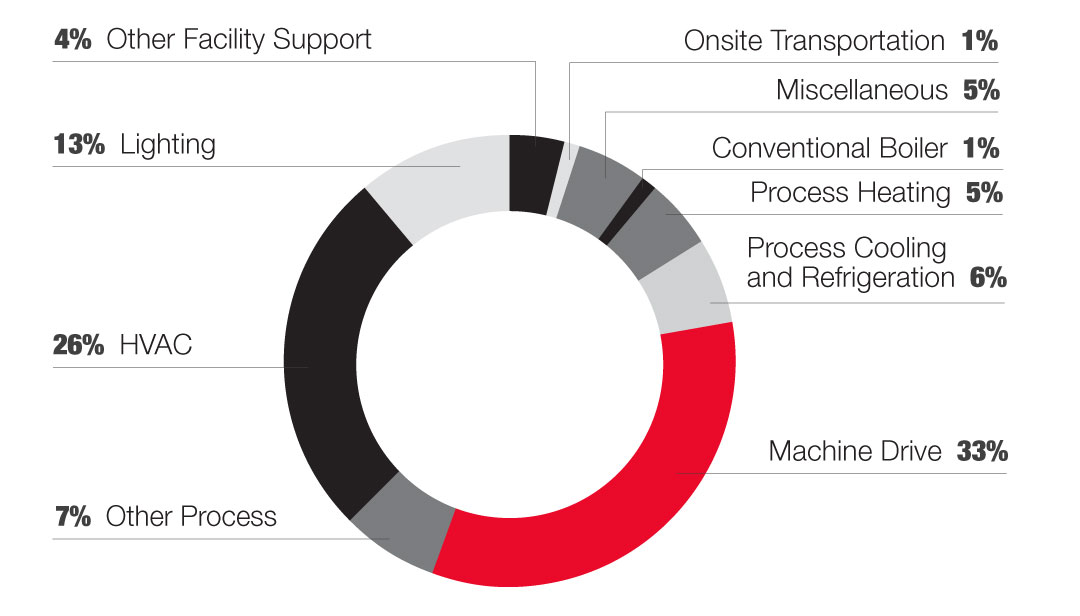
Miscellaneous Manufacturing Natural Gas End Uses
End uses include (counterclockwise, from the top): 1% other facility support, 33% HVAC, 13% other process use, 38% process heating, 4% conventional boiler use and 11% miscellaneous.
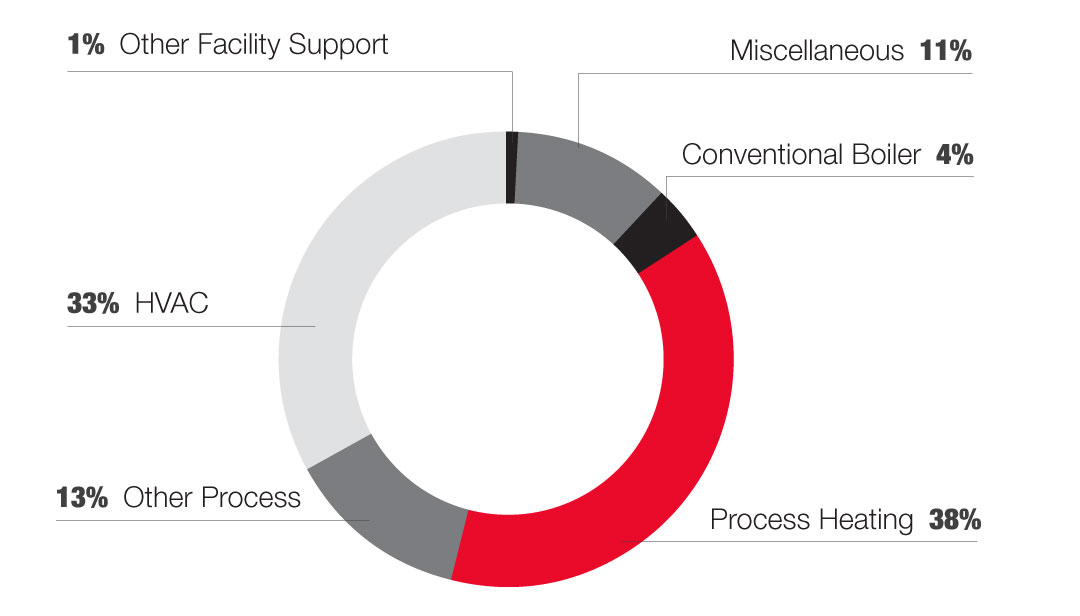
Small Business Express is here to lend a hand
Small Business Express makes it easy for you to get professional guidance to identify energy-saving opportunities. Eligible rebates can help lower your out-of-pocket cost to replace failing equipment, and help you save energy and money long term.
Ways to Save

There are a variety of ways to save energy and reduce waste within a process heating system.
- Simple: Monitor, inspect and clean indirect heating systems on a regular basis to ensure efficient operation. Repair system leaks to reduce air infiltration into the heating process, and keep furnace doors closed whenever possible.
- Low cost: Repair leaking steam traps. Complete a boiler tune-up.
- Capital investment: Implement waste-heat recovery to use for preheating, steam generation or water heating. Install furnace pressure controllers to adjust pressure within furnaces. Optimize the ratio of air to fuel with flow metering or fuel-gas analysis to maximize burner efficiency.

Compressed air systems are often high energy users in manufacturing facilities. Opportunities to reduce energy consumption for these systems are listed below.
- Simple: Reduce the compressed air system pressure to minimize energy consumption while still maintaining compressed air end-user performance. Optimize compressor sequencing for systems with multiple compressors.
- Low cost: Install no-loss condensate drain valves to eliminate compressed air loss when condensate is drained from the system. Replace standard air nozzles with high-efficiency air nozzles to reduce compressed air flow requirements for the process.
- Capital investment: Reduce artificial demand for compressed air by installing a pressure flow controller or regulator. Replace air-powered devices with electric-powered devices, like low-pressure blowers for air cleaning tasks. Duct cooler outdoor air to the compressor to reduce overall energy consumption. Recover waste heat from the compressed air system for space and/or process heating. Install variable-speed compressors and high-efficiency compressed air dryers.

Motors drive a variety of processes within manufacturing facilities. Follow the steps below to drive motor-related energy savings.
- Simple: Inspect motors on a regular basis for adequate ventilation, non-cracked belts, properly aligned shafts, and secure and quiet bearings. Plus, clean and lubricate appropriately. Review and ensure voltage is the same on all phases of input power.
- Low cost: Run right-size motors primarily in the 65%-100% of load range when possible and utilize controls to minimize motor runtime.
- Capital investment: Upgrade from classic V-belts to a notched or synchronous belt drive, which is a more efficient belt style, and install premium-efficiency motors whenever possible. Another way to save energy is to install variable-frequency drives (VFDs) on motors; this will alter the speed of the motor to reduce electric consumption.

There are several simple changes you can make around space heating, cooling and ventilation to help save energy.
- Simple: Ensure HVAC equipment schedules that control space temperatures and ventilation are optimized based on building occupancy. Change air filters every one to three months or more frequently for areas with heavy particulate load. Clean condenser coils to maximize system efficiency.
- Low cost: Perform annual maintenance on all HVAC equipment.
- Capital investment: Install an energy management system to control building energy flows. Replace older furnaces with new energy-efficient equipment. Ensure proper insulation levels in walls, floors and the roof to lower bills and increase comfort. Install high-volume, low-speed fans in heated spaces to circulate warm air near the ceiling throughout the space. Implement advanced rooftop controls by retrofitting existing packaged rooftop air units to reduce heating, cooling and fan energy usage.

Lighting costs can be significant depending on the size and layout of your facility. The tips below can help you save 50% or more of the cost associated with lighting.
- Simple: Turn lights off when the area is not in use.
- Low cost: Install motion sensors in aisles and other areas where lights would otherwise be left on for extended periods of time with no occupancy. Timers and photo sensors can be used to keep security and outdoor lighting on a schedule to maximize efficiency.
- Capital investment: Upgrade to LEDs to see savings of 50% or more compared to fluorescent, metal halide and high-pressure sodium fixtures! LEDs also have a longer life span resulting in reduced replacement costs, emit less heat thereby reducing the cooling load and eliminate time lost due to lighting warmup periods since they are instant start. Implement a network lighting control system to control the settings for individual lights or groups of fixtures.